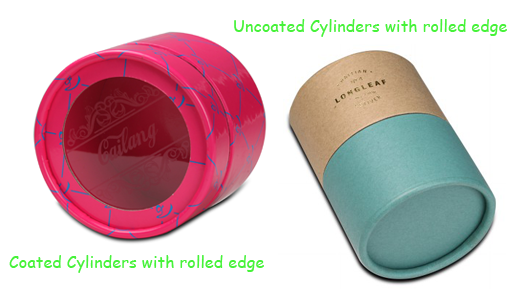The gluing effect of wood is influenced by many factors, generally including the bonding process of adhesives, wood and wood. As far as the adhesive is concerned, it is necessary to meet as much as possible the comprehensive requirements in terms of sticking performance, adhesive operation and cost. Specifically, the wood adhesive should have suitable viscosity and good wettability, fluidity, high bonding strength, certain elasticity of the rubber layer after curing, water resistance, heat resistance, aging resistance, easy to use, and can be used at room temperature. Curing at low pressure for a short time, no toxicity and strong irritant, cheap. Rich sources of raw materials, etc. Although there is currently no glue that can fully meet these conditions, general wood adhesives should have some basic conditions:
1. The adhesive should have polarity. Wood is a polar material containing a large number of polar groups, such as ether bonds, hydroxyl groups, etc., and only when the adhesive has considerable polarity, can there be a strong polar group interaction with wood. Or form physical cross-linking to achieve strong bond strength.
2. The adhesive pair should have suitable wetting parts for the wood. When the adhesive is finished, the adhesive must have a certain ability to wet and diffuse on the surface of the adhesive body, and the adhesive contact surface is enlarged to form a thin and uniform adhesive layer between the adhesive molecules and the surface of the adhesive body. Form strong molecular interactions. The ability of the adhesive to wet the surface of the wood is closely related to the viscosity of the adhesive. When the viscosity of the adhesive is too large, its ability to diffuse and wet the wood is reduced. However, if the wettability of the adhesive is too large, the adhesive has strong penetrability, and too much glue will seep into the interior of the wood. As a result, the defects of the rubber layer and the excessive amount of glue are caused. The wettability of the glue is too small. Will cause the layer to be too thick. The glue distribution is not uniform. Therefore, in the wood gluing process, the gluing property with appropriate wettability should be selected according to the actual situation.
3. Wood adhesive should have proper acidity and alkalinity. The pH of the glue has a great influence on the bonding strength. Strong acid and strong alkaline adhesives will reduce the mechanical properties of wood, especially strong acidity. Acid has a hydrolysis effect on wood, which seriously reduces the mechanical strength of the wood. When the pH of the glue is below 3.5, the bonding strength of the wood begins to decrease. therefore. The pH of the wood adhesive is not less than 3.5.
4. Wood glue should have an appropriate molecular weight. The molecular weight of the adhesive is related to the process properties such as viscosity, wettability, fluidity and permeability of the adhesive. Too high or low molecular weight is detrimental to adhesion.
The wood adhesives currently used in large quantities are generally urea formaldehyde, phenolic acid, melamine, polyvinyl acetate and the like. Such adhesives have defects such as poor water resistance, volatile formaldehyde, and insufficient elasticity. Waterborne polyurethanes have begun to replace trisaldehyde or polyvinyl acetate in many applications.
Waterborne polyurethane wood glue can be divided into two categories: vinyl waterborne polyurethane glue and one component waterborne polyurethane glue. For vinyl waterborne polyurethane adhesives, they are generally in two component form. The A component is a hydroxyl-containing aqueous polymer solution or emulsion, and the B component is an isocyanate group-containing polymer or monomer. The use is a mixture of two, an isocyanate and a hydroxyl group in the A component in the solidification process. Hydroxyl reaction. The most remarkable feature of vinyl waterborne polyurethane adhesives is their excellent water and heat resistance.
The other type is a one-component aqueous polyurethane, which is usually of the anionic and cationic type. This type of adhesive is a one-component, easy to use, and has good wetting ability to wood. Commonly used on the market is an anionic waterborne polyurethane, which has good bonding strength to wood and has good water resistance and elasticity. Cationic waterborne polyurethane adhesives are a new type of wood adhesive that can double the bond strength compared to anionic, and its strength is greater than that of two-component vinyl polyurethane wood glue. At the same time, the cationic water-based polyurethane wood glue has adjustable elasticity and viscosity, and can easily prepare elastic rubber or hard wood glue to meet the requirements of different woods.
Paper Cylinders With Rolled Edge
Paper Cylinders with rolled edge is another kind of paper cyliner tubes , the rolled edge are aimed to the top lid or base . Not all paper tube boxes are suitable for having a rolled edge , for example , those whose inside diameter is less than 3mm can not be done with rolled edge s, 3mm is the minimum size for the rolling machine . Also , too thin or too thick cardboard can not make the very perfect rolled edge , the most ideal thickness for paper Cylinders with rolled edge is 1.2mm. In addition , those matte uncoated paper are not suitable for the paper Cylinders with rolled edge as its edge may turn to be glossy when rolled . Round paper tubes can be done with display window as well , you can choose to hide or not to hide the edge of the window , it`s up to you .

Fall in love with the our paper tubes , please feel free to contact us for a quotation .
Paper Cylinders With Rolled Edge
Paper Cylinders With Rolled Edge,Paper Cylinder Tube With Rolled Lid,Customized Cardboard Cylinder,Rolled Cylinder Paper Box
Huizhou Cailang Printing Products Co.,Ltd. , https://www.onlymakeboxes.com